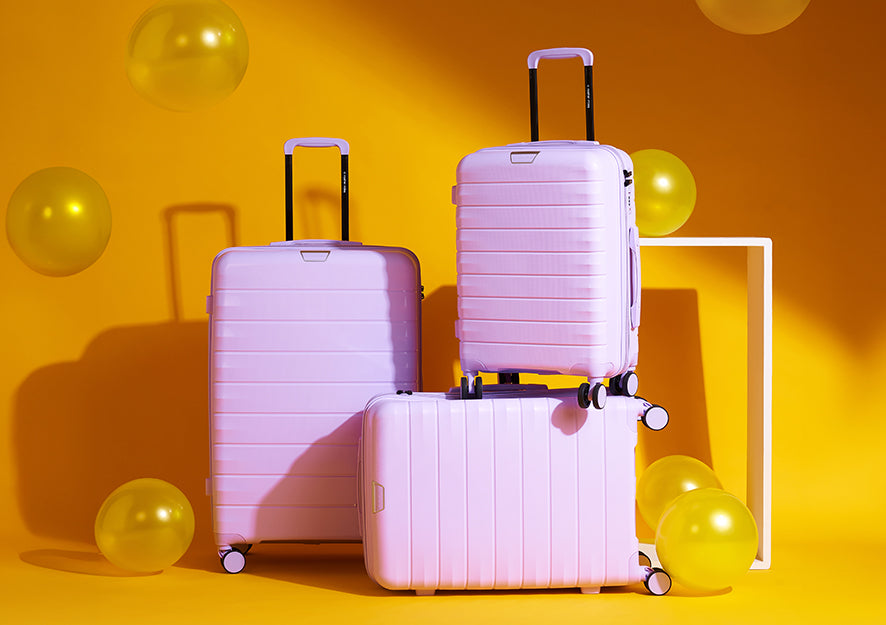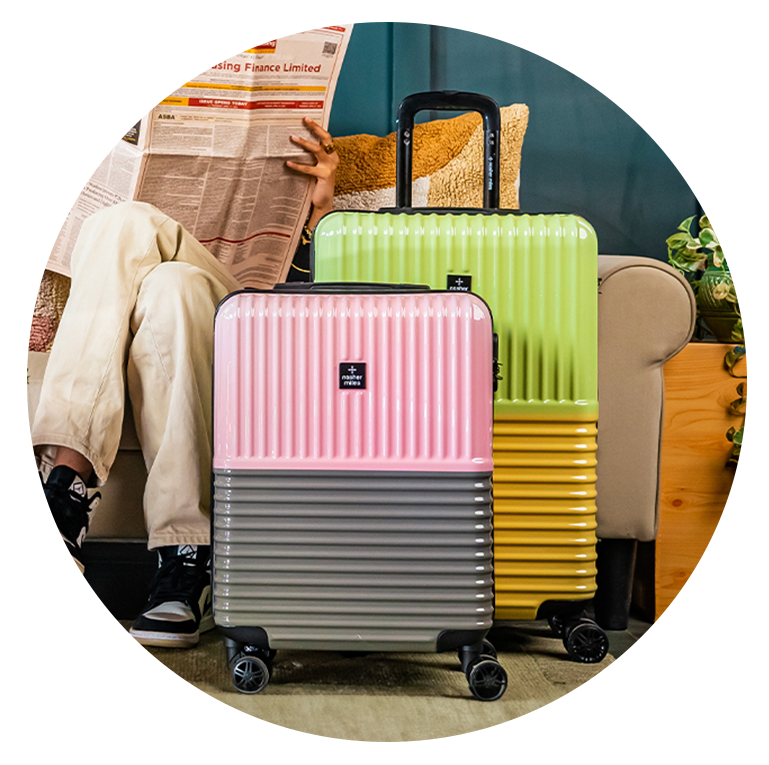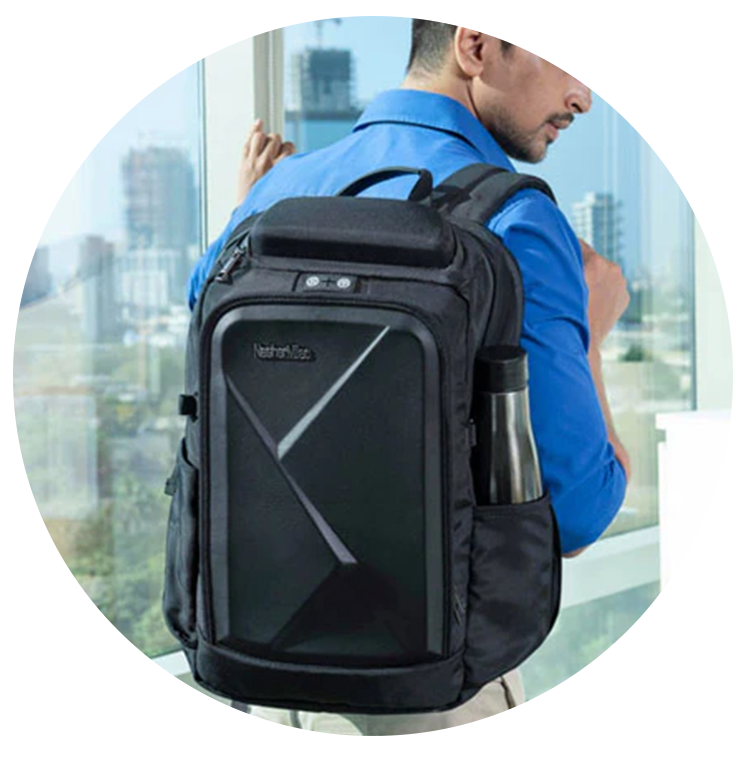What You Need to Know About Domestic & International Cabin Baggage Rules

Everyone loves traveling. Traveling clears the head, brings mental peace, and gives us a much-needed break from our routine life. The rule behind cabin baggage can confuse you when running to board an international flight or a short domestic flight in India. It is just necessary that you know these rules before boarding a flight so that all last-minute mishaps can be avoided and a lot of money does not go to waste in high baggage fees. The policy of every airline is different, and these policies usually change with the destination, fare type, and even the aircraft used.
In this guide, we will walk you through India’s domestic flight cabin baggage rules, international airline policies, and smart tips to make your journey stress-free, whether you are carrying trolley bags, backpacks, or a compact soft luggage bag.
India Domestic Flight Cabin Baggage Rules – Airline-Wise Guide
When traveling within India, cabin baggage policies are governed by individual airlines while still adhering to DGCA guidelines. Here's what each major Indian airline permits:
IndiGo
IndiGo gives permission to carry a single cabin bag of 7 kg with a size that cannot exceed 55cm X 35cm X 25cm. Also, the passengers can bring personal baggage, such as a laptop case or a small backpack. In a bid not to have your trolley bags checked at the gate, you should make sure that your luggage is within the required size so that you can carry it through.
Air India
Air India has slightly more generous policies. Passengers in economy can carry up to 8 kg while passengers flying business class get a 12 kg cabin allowance. A soft luggage bag is ideal if you want flexibility, as it's easier to squeeze into tight overhead cabins.
SpiceJet
SpiceJet permits one piece of cabin baggage weighing up to 7 kg, along with one small personal item. Use backpacks with organized compartments to keep essential documents, chargers, and electronics within easy reach.
Go First
Go First sticks to the standard 7 kg limit for cabin baggage. However, they are stricter on size, so always measure your trolley bags before heading to the airport.
Cabin Baggage Rules for Domestic Flights in India – Must-Know Tips
Understanding cabin baggage rules in India isn't just about size and weight; it's also about strategy. Here's how to make the most of your allowance.
Tips to avoid excess baggage fees
Stick to the weight limit by packing lighter clothing and removing unnecessary items. Weigh your bag at home using a luggage scale to ensure compliance. Avoid heavy trolley bags when a lighter soft luggage bag can do the job just as well.
Smart Packing Tips for Domestic Flights in India
Roll your clothes, use packing cubes, and prioritize items you will actually use. Choose backpacks with multiple compartments for better organization. Always place heavier items at the bottom of the bag for balance and protection of other belongings.
Electronics and liquids regulations
According to cabin luggage rules for domestic flights in India, liquids must be carried in containers of 100 ml or less, all packed into a transparent, resealable plastic bag. Laptop power banks must be placed in carry-ons, not in check-in luggage.
Baggage allowances for infants and children
Most airlines allow an additional small bag for baby essentials like diapers, milk bottles, and toys. However, make sure to confirm this with your airline in advance to ensure it's included in the Indian domestic flight cabin baggage rules.
International Flight Cabin Baggage Rules – What You Need to Know
Cross-border travel comes with its own complexities. The international flight cabin baggage rules differ based on carrier, country, and travel class. Here's what to keep in mind while flying internationally:
Standard International Cabin Baggage Allowances by Weight and Size
Most international airlines allow 7 to 10 kg per cabin bag, with dimensions typically capped at 55cm X 40cm X 23cm. Passengers flying business class often enjoy a higher allowance. Always verify your allowance while booking your next trip.
Cabin baggage policies of leading international carriers (Emirates, Qatar, Singapore Airlines, Lufthansa, etc.)
-
Emirates: 7 kg for economy; business/first class passengers may carry 2 pieces totaling 14 kg.
-
Qatar Airways: Allows one bag up to 7 kg in economy; business class gets up to 15 kg.
-
Singapore Airlines: Economy travelers can carry one 7 kg bag, while premium cabins enjoy more.
-
Lufthansa: Economy allows 1 piece up to 8 kg; business and first class allow 2 pieces.
Make sure to carry lightweight trolley bags or soft-sided carry-ons for easier international compliance.
Country-specific security and baggage restrictions (USA, EU, UK)
-
USA: TSA regulations are strict—electronics must be removed and screened separately.
-
EU: Follows the 100 ml liquid rule strictly.
-
UK: Allows one cabin bag with size restrictions; liquids, electronics, and baby food undergo additional screening.
Additional Considerations for Cabin Baggage (Both Domestic & International)
Beyond just size and weight, there are several things travelers often overlook when interpreting cabin baggage rules. Let's take a look at them.
Carry-on dos and don’ts
Do pack essentials like IDs, medications, and valuables in your cabin baggage. Do not carry sharp items, full-size toiletries, or power banks in your check-in baggage.
High-value and essential items to keep in cabin baggage
Your cabin bag should include jewelry, electronics, a passport, money, and all the essential documents. Backpacks with anti-theft zippers are highly recommended.
Medications, documents, and emergency items
Pack any prescription medication (with your doctor’s note if needed), boarding pass, hotel confirmations, and emergency contacts in a separate pouch inside your soft luggage bag or backpack.
How to handle oversized or fragile cabin items
Contact your airline beforehand to request cabin stowage or gate-checking options for items like musical instruments or medical equipment. Avoid placing fragile items in overhead bins packed with heavy trolley bags.
Final Checklist Before You Fly
Before you head to the airport for your next adventure, use this as a last-minute checklist to make sure you are ready.
Confirm baggage rules with your airline before traveling
Always verify the latest cabin baggage rules on your airline’s website. Policies may change based on route, aircraft type, or updated regulations.
Measure and weigh your bag at home
Use a measuring tape and digital scale to check both the weight and dimensions of your trolley bag. Most Indian domestic flight cabin baggage rules are strict on limits; even a few grams more can result in a fee.
Have a backup plan if you're over the limit
If your bag is overweight, keep a foldable backpack in your carry-on bag to quickly unload some items. Alternatively, consider prepaying for extra baggage online as it's usually cheaper than paying at the airport.
Consider cabin-approved luggage options
Invest in airline-approved trolley bags and soft luggage bags designed to meet cabin size restrictions. Look for features such as lightweight, 360-degree spinner wheels, and a dedicated compartment for laptops and documents.
Conclusion
Understanding domestic and international cabin luggage rules is essential for a smooth, stress-free travel experience. Whether you are flying domestically or internationally, being aware of the size, weight, and security regulations helps you avoid unexpected hassles at the airport. From choosing the right travel bag to packing smartly, every detail counts. Always double-check your airline’s policies and invest in quality, cabin-compliant luggage that suits your needs. With the right preparation and the perfect travel gear, you can breeze through security, maximise your carry-on space, and focus on what truly matters: enjoying the journey ahead.
FAQ's
1) Can I carry food or medicines in my cabin baggage during international travel?
Yes, you can carry food and medicines in your cabin baggage during international travel. However, liquids and gels must be in containers of 100 ml or less. Medicines should be accompanied by a prescription, especially if they are in liquid form or medically essential.
2) What items are not allowed in cabin baggage during domestic flights in India?
Prohibited items include sharp objects (scissors, knives), flammable items, tools, firearms, and large liquid containers. Power banks above airline-approved capacity are also restricted. Ensure all toiletries follow the 100 ml rule and are packed in a transparent, resealable plastic pouch for screening.
3) Do countries like the USA and the UK have specific cabin baggage restrictions?
Yes, both the USA and the UK have strict security protocols. The USA mandates separate screening of electronics and limits liquids to 100 ml per container. The UK enforces similar liquid restrictions and allows only one cabin bag on some carriers. Always check airline-specific rules before flying.
4) What are the size restrictions for cabin baggage on Indian domestic flights?
Most Indian airlines limit cabin baggage size to 55cm x 35cm x 25cm. This may vary slightly by carrier, so it’s advisable to confirm dimensions while booking. The size must include wheels and handles, ensuring the bag fits in overhead compartments comfortably.
5) What is the cabin baggage weight limit for domestic flights in India?
The standard cabin baggage weight limit for domestic flights in India is 7 kg for economy-class passengers. Premium cabins may allow more. Airlines also permit an additional personal item, like a laptop bag or handbag. Exceeding the limit may result in extra charges.



































